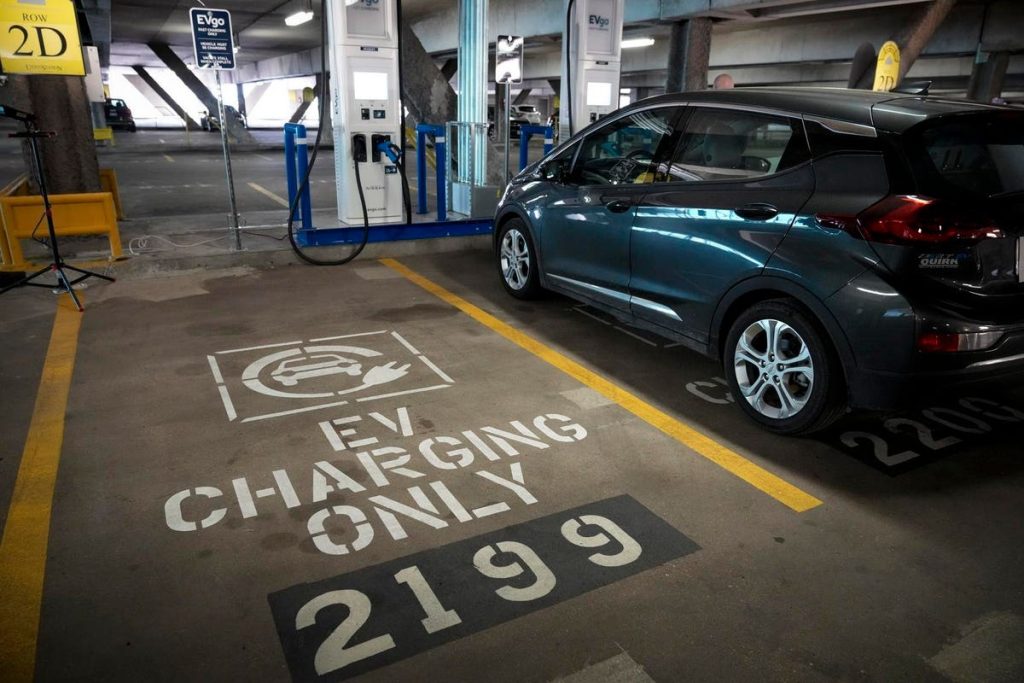The United Auto Workers may be nervous about what the rise of electric vehicles will do to their jobs, but Electric Drive Transportation Association President Genevieve Cullen, a veteran of the industry, says she’s “extremely optimistic” about the future of EVs.
At the recent MOVE: Mobility Reimagined 2023 conference in Austin, Texas this week, Cullen said that three forces are moving EVs forward at once, causing adoption and expansion to rev up. Those forces are “technology, policy and markets,” she told the audience at various sessions during the conference.
The autoworker unions are apparently concerned that the proliferation of EVs will cause them to lose jobs. As the Slate put it recently, “Lawmakers have supercharged government investment, consumer sales are revving up, and manufacturers are rapidly introducing new product lines. But this future is not guaranteed to offer the same kinds of middle-class jobs and robust benefits that unionized autoworkers enjoy in many states.” The unions are also concerned that the trifecta of federal legislation passed by the last Congress under Speaker Pelosi incentivizes automakers to build plants in Republican-dominated states, which also happen to be more hostile to unions, thus reducing the power of unions and reducing the pressure to provide fair pay and benefits to workers.
As Cullen put it at MOVE 2023, “The future is electric. The only questions are: how fast will we get there and will we lead or lag the market?” The answers depend upon technology, policy and markets, she added.
Technology
The technology piece is battery advances, component advances, and access to the critical minerals needed for them. The policy piece is partly answered by that $3 trillion in those three big pieces of legislation that together intentionally rebuild and reinvent the country’s infrastructure for a clean energy, net zero economy that is resilient to the ravages of climate change.
The Infrastructure bill alone provides $7.5 billion to build 500,000 EV charging stations nationwide, but that’s about a third of the number the country will need, according to Cullen’s research (which she quoted as from McKinsey).
Markets and Labor
Then there’s the markets piece. Sales of EVs are up this year, to a whopping 4 million EVs on the road today, Cullen told a MOVE session audience, and adding that Bloomberg New Energy Finance estimates that the U.S. will hit 1 million EV sales this year. The Biden Administration set a goal of having 50% of new car sales by 2030 be EVs. There are currently 87 EVs models available she said. These sales could be bolstered by the $7,500 tax credit for the purchase of an electric vehicle that meets its stringent U.S.-made criteria that the IRA provides.
What if any concessions the unions win that affect the automakers’ commitments to EVs will affect the timing, but they cannot stop the proliferation of these popular vehicles. Telva McGruder, Executive Director of Body Manufacturing Engineering at General Motors – and a 29-year veteran of the company who formerly served as Chief Diversity, Equity and Inclusion Officer as well as head of facility engineering in North America – told me in an exclusive interview on Electric Ladies Podcast that various advances in the auto sector are changing jobs and the communities in which the company works. One key way that does affect the unions is that the company needs talent to be “multi-variable” in skills today, to be nimble enough to adapt to changes as the industry evolves.
Cullen also cited the global supply chain as one of the factors that will drive or stall EV adoption in the U.S., and those factors include the EV and battery plants that automakers have announced, including the ones that are giving the UAW pause. There’s been over $200 billion in private sector investment to be made by 2030 announced already by the industry, she added.
Policy
The policy piece goes beyond the $3 trillion in funding and incentives though, Cullen explained. She said it also includes what Congress does on permitting reform and transmission, since those EVs need electrons and no one wants the electrification of our economy writ large (not just because of EVs) to crash the grid. The pressures of more extreme weather events also require the country’s power system to be strengthened and more resilient.
Then there’s also how the Treasury Department designs the rules around the incentives in the IRA, Infrastructure and CHIPS Acts, what the Environmental Protection Agency (EPA) does on greenhouse gas emissions regulations, and how the courts respond to the legal challenges to the Clean Air Act and other EV and electrification-related orders and legislation.
The Biden administration also instituted the Justice 40 Act, which requires that 40% of the benefits of funding go to disadvantaged communities, which could help proliferate EV charging stations and increase access to EVs more broadly.
Can’t stop progress
The UAW may be resisting the transition to electric vehicles, and/or nudging “Union Joe” to convert his joining them on the picket line – the first sitting president of the United States to do so – to pressuring the automakers to build their new plants in pro-union states. But EVs are here to stay and growing.
That was certainly the message at MOVE 2023, including and especially from EDTA’s Cullen, who has been at this work for decades.
Read the full article here








